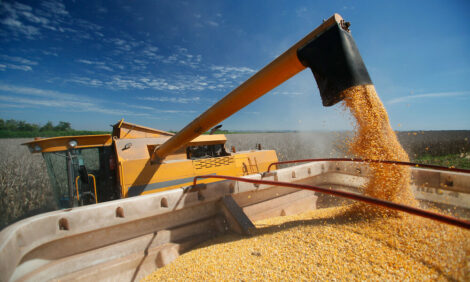



Sense of Community Aids Establishment of Renewable Energy Cooperatives
The establishment of cooperative biogas projects is aided by strong community spirit, regional traditions and farmers' sense of responsibility for their local area, according to a new study in northern Italy.The findings suggest that renewable energy policy could benefit from taking account of community aspects at the local and regional levels.
With the EU committed to generating 20 per cent of its energy from renewable sources by 2020, achieving this will likely involve decentralisation of the energy supply, with locally and collectively owned energy projects becoming more common according to the report, Communities matter: Institutional preconditions for community renewable energy, written for the European Commission.
To try to understand the importance of community in renewable energy development, the author of the study, Steffen Wirth of Alpen-Adria University in Klagenfurt in Austria examined community-owned biogas plants in South Tyrol, northern Italy.
At biogas plants, organic material is digested by bacteria, producing gas that can be used for energy production.
This study used data on aspects such as scale, ownership and organisation of seven cooperatively run biogas plants fed with manure and dung from surrounding farms. A total of 400 farmers are involved in the cooperatives. The researcher carried out detailed interviews with seven chairmen of biogas cooperatives, as well as 10 experts in the fields of biogas, innovation, energy and agriculture in the region.
There is a centuries-old tradition of sharing agricultural work among farmers in the area, as well as regional government support for renewable energies dating back to the 1980s. However, before the 2000s, most biogas plants were single farm initiatives.
The author of the study found that each cooperative emerged under a similar set of circumstances and influences, highlighting six common steps.
In the first, three motivating factors played a role: regional regulations requiring farmers to reduce manure output; a local tradition of small-scale energy generation; and complaints about odour. In the second step, around five people formed a task force and began discussions about a cooperative and then, in the third step, opened the project to farmers. In the fourth step, farmers formally joined the cooperative and in the fifth step, practical action was taken to identify a site and secure funding. Finally, the farmers agreed to the services that the cooperative would provide.
The study identified categories of community influence on the establishment of biogas cooperatives, the most important, alongside economic considerations, being ‘community spirit’. For example, those who formed the cooperatives wanted the farmers to develop their projects from the bottom up, starting from a local community perspective rather than being led by the authorities.
Economic incentives included tax advantages and potential funding sources aimed at cooperative organisations.
The tradition of sharing agricultural work – such as irrigation or dairy farming – in a cooperative way was also important for the formation of these initiatives as it meant that it was automatically assumed that biogas projects would be organised in this way. In addition, the sense of responsibility farmers felt for their local communities and environment also fostered conditions that aided the establishment of cooperatives.
The importance of community spirit, tradition and responsibility felt by farmers suggests that uniform national policies will not be as effective as regional and local renewable energy policies, which tie into cultural norms and established practices particular to each area, says the researcher.
July 2014









